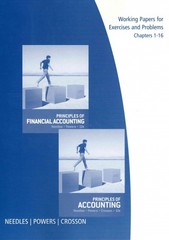Question
Hi, I have a question about the following snippet regarding Variance Analysis below and I would really appreciate your help (note: this is from a
Hi, I have a question about the following snippet regarding Variance Analysis below and I would really appreciate your help (note: this is from a CPA Core 2 Prior Exam Case):
My Question: Regarding the snippet below, I am wondering if I am on the right track here as I would like to know how I would go upon calculating the Direct Material Price and Usage variance appropriately in addition to calculating the Direct Labour Rate/ Efficiency variances as this was the required. (I am currently confused on the 2nd screenshot (Appendix II) where it shows Unit Sales Price per jacket and the Sales/ production volume in addition to the quantity per cost driver). - To calculate the variances, would I be using the production volume as the basis for my Actual/ Standard Quantity computation. I am confused as to why they provided the Quantity per cost driver for both actuals and budgeted (are these to be used)? I am also confused as to why they provided Appendix I with favourability/ unfavourability of the variances.
From my understanding the Direct Materials Price/ Rate Variance is calculated as "Actuals (AQ*AP) - Standard Budget (AQ*SP) whereas the Quantity/Usage Variance is calculated as Standard budget (AQ*SP) - Flexible Budget (SQ*SP). Same goes for Direct Labour Rate/ Efficiency Variances using direct labour as a base.
ASK is: CPA, please calculate the labour rate and efficiency variances as well as the materials price and usage variances. I would also like you to explain where these variances, if any, are coming from and suggest improvements
Case Facts: (3 Divisions - Jackets, Bag and Leather which sources and prepares the raw materials needed for both the Jacket and Bag division)
In 2019, we acquired a new high-end client, Node Inc. (Node). Alex's long-time friend Cecilia Lee is the CEO of Node. Cecilia has grown her business much faster than expected and brings us all her work. Node's business represented 15% of our total sales and we expect it to grow even more next year. However, Cecilia is a perfectionist and only wants very specific materials, which are more expensive than the materials used for our other high-end clients.
Node's jackets are very detailed and require more labour. Unfortunately, Cecilia rejected many items during the quality control process that occurs at the 90%-completion point. This led to us reproducing a high volume of jackets for Node. Because Node owns the design, we could not sell the rejected items and they had to be scrapped
We used to assign our senior tailors to various high-end work, and they would spend any remaining hours supervising and training our junior tailors. However, they no longer have time for this. We now need more senior tailors dedicated to work and quality control for Node and recently we replaced two junior tailors who worked on Node products with two senior tailors. We charged Node more than our average customer, but I think we should have charged even more. If we charged a higher price, we would not have had the material and labour variance issues.


Step by Step Solution
There are 3 Steps involved in it
Step: 1

Get Instant Access to Expert-Tailored Solutions
See step-by-step solutions with expert insights and AI powered tools for academic success
Step: 2

Step: 3

Ace Your Homework with AI
Get the answers you need in no time with our AI-driven, step-by-step assistance
Get Started


